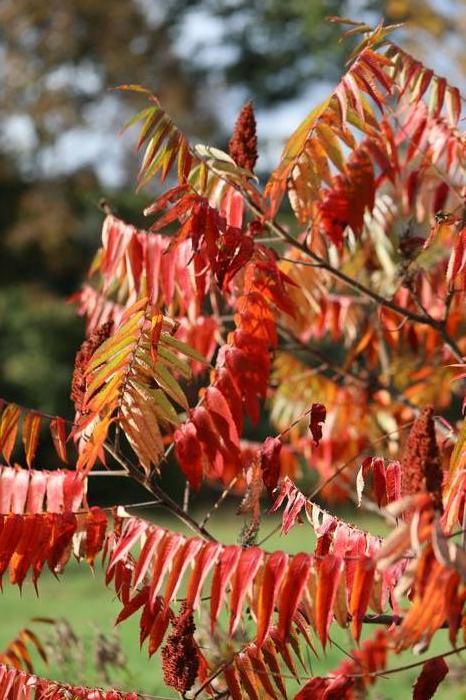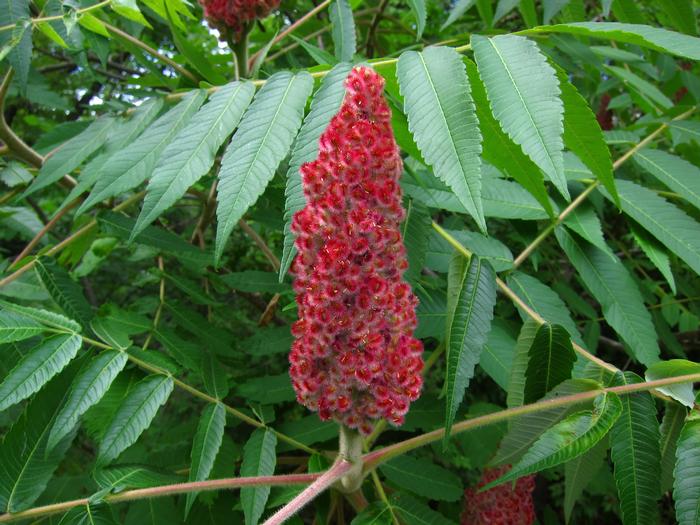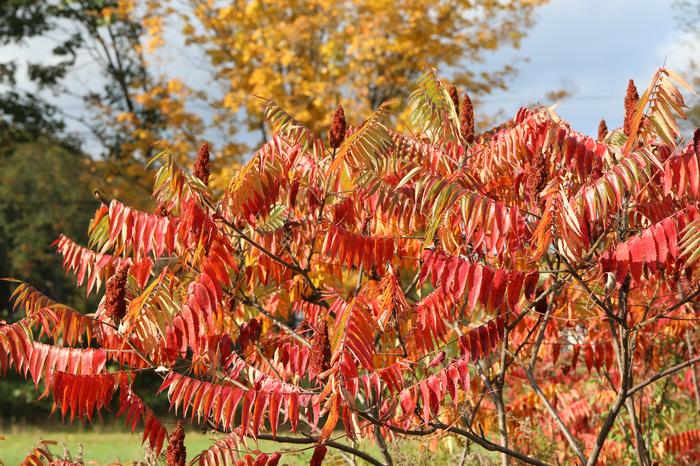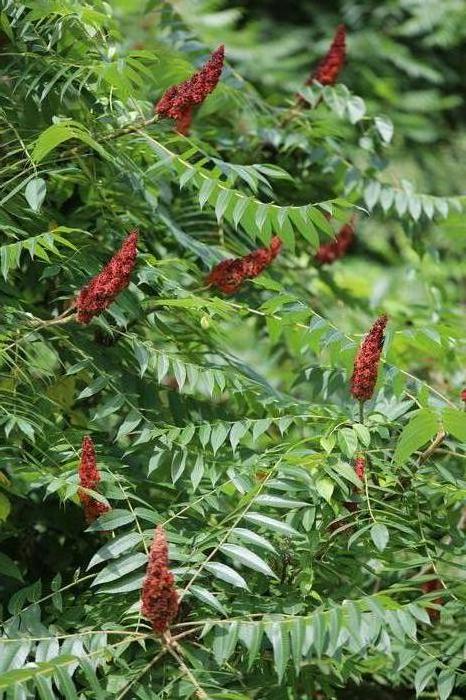Staghorn sumac is a common sight on our New England roadsides, rising from the brush with tall stems bearing huge, conical clusters of densely fuzzy fruit. The fruits and foliage rival the invasive burning bush for fall color, and the species will establish just about anywhere, suckering to form a large patch over time.
Return to Plant Search Home
Cultivation Status
|
Exposure
|
Soil Moisture
|
Ecoregion
| • |
(83) Eastern Great Lakes Lowlands |
| • |
(59) Northeastern Coastal Zone |
| • |
(84) Atlantic Coastal Pine Barrens |
| • |
(82) Acadian Plains and Hills |
| • |
(58) Northeastern Highlands |
|
Ornamental Interest
| • |
Fall Foliage |
| • |
Fall/Winter Fruit |
| • |
Summer Bloom |
|
Attracts Wildlife
| • |
Host Plant |
| • |
Other Pollinators/Wildlife |
| • |
Attracts Songbirds |
| • |
Attracts Bees |
|
Tolerance
| • |
Deer/Rabbit Resistant |
| • |
Salt Tolerant |
| • |
Urban Environment |
| • |
Drought Tolerant |
|
Additional Attributes
| • |
Dioecious (fruits only on female plants) |
| • |
Low Maintenance |
| • |
Edible |
| • |
Erosion Control/Soil Stabilization |
|
Landscape Use
| • |
Naturalize |
| • |
Hedge/screening |
| • |
Massing |
|
Attractive Fall Foliage and/or Ornamental Fruit
| • |
Red Fruit |
| • |
Red to Purple Fall Foliage |
|
Growth Habit
|





